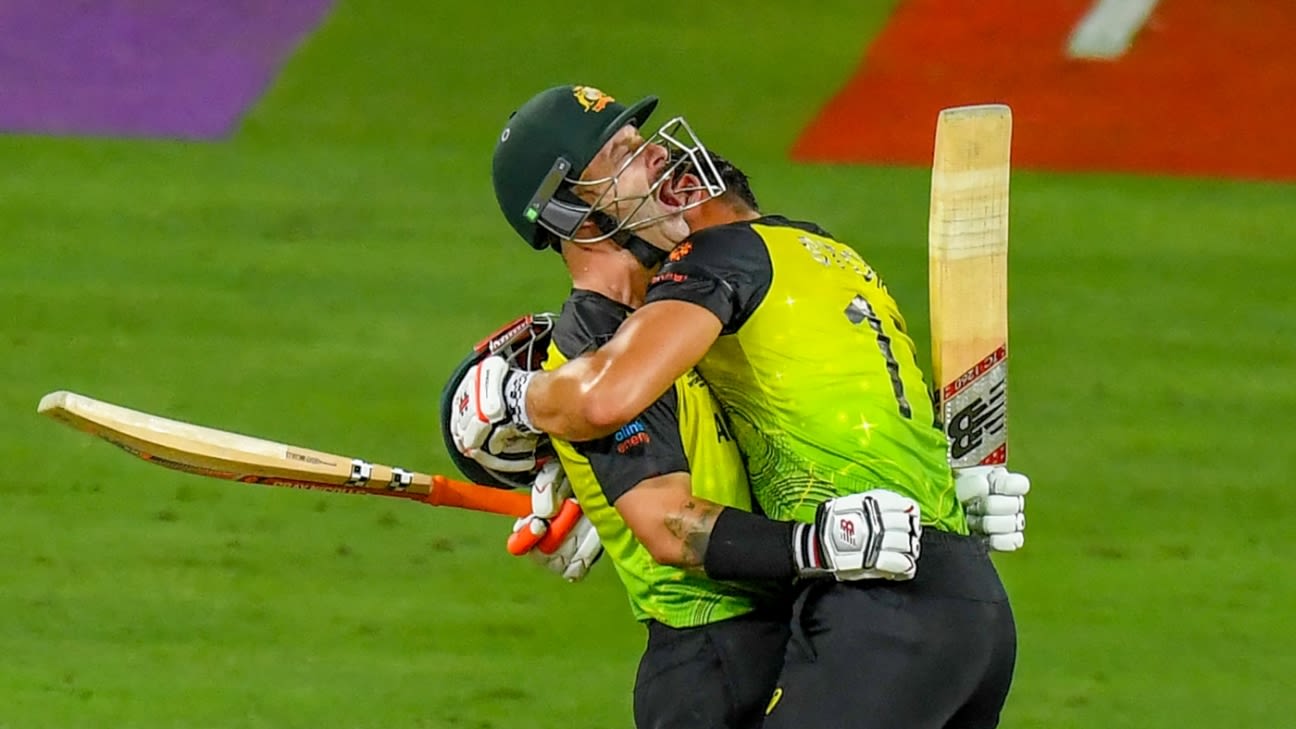This time round, there was reason to believe that had changed. Australia arrived in England 15 months ago as the No. 1-ranked team in the ICC’s rankings and with a clear strategy: five specialist bowlers, including Ashton Agar at No. 7, and Steven Smith anchoring at No. 3. Justin Langer had built a pastiche of his successful Perth Scorchers side, designed either to get par then defend it, or to restrict a team to a middling total which they could chase without taking risks.
A year later, Australia left Bangladesh on the back of five consecutive series defeats and looked like a rabble. There was no clarity as to the identity of their starting XI for the World Cup following Covid-related withdrawals which caused wholesale personnel changes across different tours. There was disquiet around Langer’s hands-on coaching style. There was no clear plan as to how they would accommodate their returning stars, many of whom had hardly played in the build-up to the tournament.
For once, that meant no expectations on them to reach even the semi-finals – not least with the defending T20 and 50-over World Cup winners both drawn in their Super 12s group. “We were underestimated,” Adam Zampa said. “We spoke about it as a collective before the World Cup: our lead-up wasn’t ideal but when you look back, even 18 months, two years ago, we were the No. 1 team in the world and all these names were back in our squad. We were pretty confident coming into this World Cup.”
The result was among the most comprehensive defeats of the tournament: England took early wickets, the rest of the batting lineup were rendered shotless without the cushion of batting depth, and Jos Buttler knocked off a 126-run target with 50 balls to spare. “We were disappointed,” Finch said. “We felt as though in that game we were probably a little bit timid and got outplayed in the powerplay. It was just about staying really aggressive and understanding this format of the game that when you’re up against a great opposition, they don’t always allow you big opportunities to get into the game.
“For the guys to have a couple of days off and re-group after a really gruelling first couple of weeks where we turned up, had some quarantine and trained really hard in the lead-in to the tournament was important. What we talked about during that time was staying committed to being aggressive. We reiterated that was how we wanted to go about it and committed to playing that way.”
The ascendancy in their semi-final against Pakistan shifted like a seismograph’s needle during an earthquake. Australia squeezed brilliantly for most of their bowling innings, using Mitchell Starc aggressively through the middle and with Zampa coming to the fore as he has throughout the World Cup, but were careless in their plans at the death and fed Fakhar Zaman’s strengths. Finch fell three balls into the chase during a wild first over from Shaheen Shah Afridi and their plan to be ultra-positive against Shadab Khan – informed by their batting depth – nearly backfired spectacularly, with Smith and Marsh top-edging sweeps against the spin towards the bigger boundary, David Warner given out caught behind and Maxwell reverse-sweeping to deep cover.
But Stoinis and Wade did not look to consolidate. “When Marcus Stoinis, the ball after Maxwell’s wicket, hit six off Shadab Khan – I mean, that’s what you call fearless cricket,” Langer said on Friday. “if we’re going to win this tournament, we’ve got to continue on with the way we played from Bangladesh [onwards]. Bat first or second, that fearless and aggressive batting is going to be crucial.”
The IPL has had a role in other players’ revivals too: Pat Cummins and Josh Hazlewood, key fast bowlers in their Test attack, had never previously played together in a T20I before this tournament and might have shelved the format altogether but for its financial pull, and have gone on to hone their short-form skills at Kolkata Knight Riders and Chennai Super Kings. It has certainly had more of an impact on Australia’s fortunes than their own domestic league: five of the team that played in the semi-final do not hold contracts for the upcoming Big Bash season.
Their average age is high, with Cummins the youngest player in their XI against Pakistan at 28. “It’s interesting how the narrative can change really quick,” Finch laughed before the semi-final. “About 10 days ago our team was too old and now we’re an experienced team.” Dan Christian, a travelling reserve, espouses the view that “old blokes win stuff” and this is a squad built for the here and now, not the long term.
Australia winning this World Cup might seem to undermine the vision of modern T20 cricket as a structured, hyper-strategic game but the format is played by real people and talent, confidence and luck are all crucial. They may not be the world’s most data-driven team but Australia have never lacked for excellent cricketers; at a short tournament in a format that lends itself to volatility, that can be enough.
Australia’s T20 side is a complex cocktail of aggression and talent which has overcome its own contradictions and defied low expectations to reach the final of this World Cup. All that’s left is to do that for 40 more overs.
Matt Roller is an assistant editor at ESPNcricinfo. @mroller98
